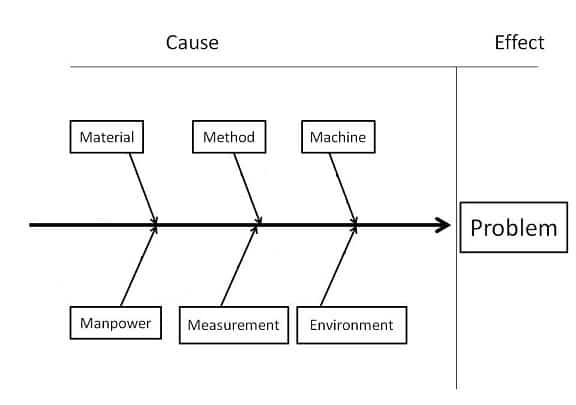
.jpg)
The Fishbone Diagram: A Decades-Old Concept That’s Still Relevant Use it to troubleshoot before there is trouble, and you can overcome all or most of your teething troubles when introducing something new. The fishbone diagram strives to pinpoint everything that’s wrong with current market offerings so that you can develop an innovation that doesn’t have these problems.įinally, the fishbone diagram is also a great way to look for and prevent quality problems before they ever arise. Having a problem-solving product will ensure that your new development will be popular – provided people care about the problem you’re trying to solve. Once all the causes that underlie the problem have been identified, managers can start looking for solutions to ensure that the problem doesn’t become a recurring one.Ĭan also be used in product development. The diagram looks just like a fish’s skeleton with the problem at its head and the causes for the problem feeding into the spine. The outputs of those root cause analyses, like the fishbone diagram, the Five Why’s, and casual factor analysis, are very powerful communication tools too.The fishbone diagram or Ishikawa diagram is a cause-and-effect diagram that helps managers to track down the reasons for imperfections, variations, defects, or failures. If a solid understanding of the context and underlying causes of past data cannot be determined, then do not deceive yourself or your decision maker regarding their applicability. I recommend doing relatively simple root cause analysis of past events to shape the context, causes, and effects of historical data to be used in predictions that help make decisions. The warning is that in many cases regression analysis takes us done the wrong path. One of the first rules of statistics is that “correlation is not causation.” We often forget that in a world of big data and relatively easy, black box statistical tools. I do agree that sometimes correlation is a result of causation, but in most cases, that is not true. Best practice when making any forward-looking prediction is to determine first determine the primary causes and then to use the top handful as the basis of the prediction. Root cause analysis of the past gets us there however, regression analysis at best helps us confirm causation relationships. However, neither is a cause of my weight gain. But not necessarily. In the case of my recent weight gain, my weight gain may be correlated to the increased size of the air temperature in Spain or the average size of pineapples in South America. Correlation is a statistical term to describe the strength of the trend of one factor to another or to the output. In some cases, cloudy weather may be correlated to water level rises in the river. In regression analysis, a trend of past factors or outputs is matched to associated factors or inputs. Regression analysis is not a tool for determining causation. In many cases, these same tools can be used to allocate or weight the effects of multiple causes of the event. Other methods, ranging from the Delphi method to gain expert opinion to finite element models, can be used to better understand the cause of a specific event. Like the detectives on the television show Crime Scene Investigation, causal factor analysis involves developing the sequence of activities surrounding an event. It is simple enough to be used in every root cause analysis involving a time sequence aspect.

Another relatively simple tool is Causal Factor Analysis. One of the simplest tools is the “Five Whys”, which basically mimics an annoying child continually asking why-why-why-why-why-why. However, when performed in a structured (and non-annoying) way, it produces good results for simple to moderately complex events. Understanding causation can take many forms, require several different approaches, and utilize multiple tools. That makes root cause analysis, the fishbone diagram and other related tools important too. In quality decision making, context is extremely important when basing the future allocation of resources on the results of events that have happened in the past. It is a core tool in root cause analysis. It is a powerful tool to use in structured brainstorming sessions or to stimulate fresh thinking. It identifies the many possible causes (the “bones”) that produce an effect or problem (the “head”). The fishbone diagram is also known as a cause-and-effect diagram or the Ishikawa diagram, after its founder.


 0 kommentar(er)
0 kommentar(er)
